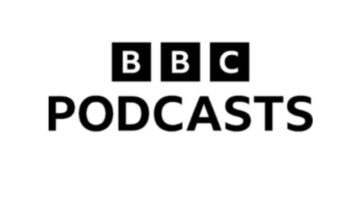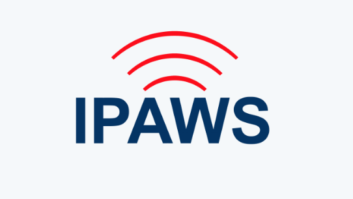
(L to R) Samuel Vuillermoz of mx3.ch with Nick Dunkerley of
Hindenburg Systems, Sara Lacomba of URTI, and Sylvain Gire of ARTE Radio
during the Prix Italia “Non-Conventional Radio” session.
TURIN, Italy — During the Prix Italia event in September, the Union Radiophonique et Télévisuelle Internationale (URTI) put the spotlight on its Franco-phonie 3.0 project.
With the goal of establishing a network of public-service radio stations that target the young French-speaking community (nearly 132 million worldwide), the program reaches out to radio staff (programmers, producers, multimedia specialists, engineers) whose work involves developing content for a younger audience.
NEW TECHNIQUES
Franco-phonie 3.0 brings together six public radio broadcasters from Africa, Eastern Europe and the Arab World. These include CRTV, Cameroon; Radio Romania; Radio Dakar, Senegal; Radio Tirana; Albania; Tunisian Radio; and SNRT, Morocco.
“Making producers aware of technical production and quality standards is key when it comes to promoting trade and the international exchange of radio programs,” said Sara Lacomba, URTI project coordinator. “Almost everywhere in the world public radio is experiencing real difficulty in finding an effective way to ‘get back in touch’ with young listeners. Those working in radio need to think together about new planning and production techniques.”
Lacomba went on to explain that the Franco-phonie 3.0 project assists these youth-oriented public radio broadcasters in redefining both their production and communication strategies. “If we want radio to be viral and multiplatform, it is not enough to slap it on different devices and stick a photo or two,” she said.
As part of the endeavor, professionals from participating stations are asked each day to put their jobs in the radio as they know them into question and to test new techniques and strategies so as to find innovative ways to connect to young Internet users and listeners.

The homepage of the Franco-phonie 3.0 website.
The project’s website allows contributing stations to enrich their podcasts with multimedia content in a clever way. Through the software and HTML5 player, developed for URTI by Hindenburg Systems ApS, a podcast file can be easily indexed in chapters, and specific images can be associated to each chapter.
Dragging a photo on the timeline will result in that photo being visualized during the playback of the podcast at that specific time. Wikipedia or external links can be added, copy-and-paste style, so that listeners can deepen their knowledge on a mentioned subject at a glance, and while listening is taking place.
KEEPING IT SIMPLE
“Posting a link that can be easily visited results in a completely different approach for reaching the listener with respect to directly pulling the additional content on the screen,” said Nick Dunkerley, creative director at Hindenburg Systems ApS. “The link never bothers the audience, and will never drive him or her to be shown something they are not really interested in — the link enables the listener to choose between deepening a specific subject or leaving things as they are.”
The new challenge for radio producers is finding “pretty” pictures to enhance the listening experience, fit for a variety of listening devices, also according to the size of the relevant screen, continued Dunkerley.
“We have to make things simple. A radio producer normally doesn’t get extra staff to manage the visual side of a podcast,” he said. “When finding the proper picture or inserting metadata as well as external links takes just a very few minutes, the extra task is usually mastered and accepted. But when it comes to longer times, it’s hard to imagine they will have the time to do it in addition to their usual job.”












